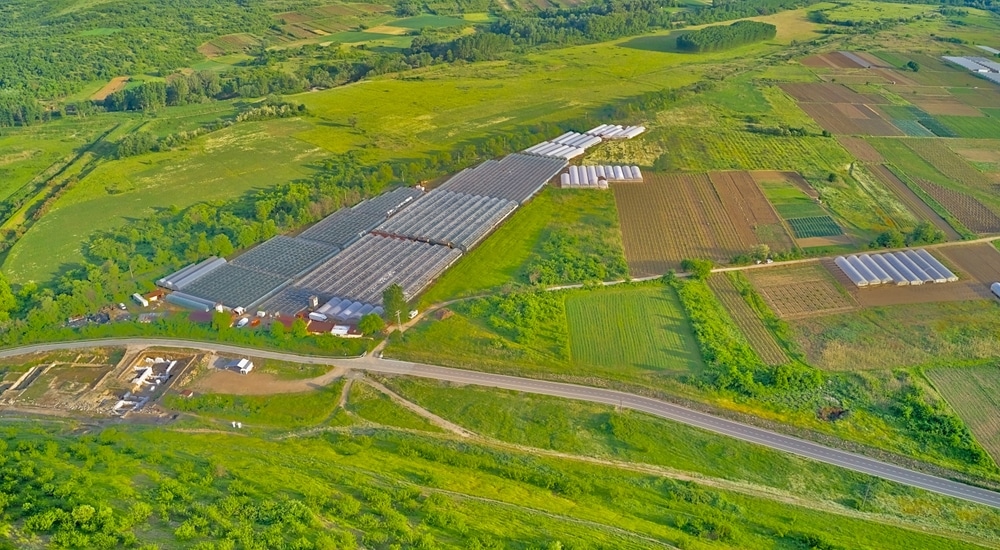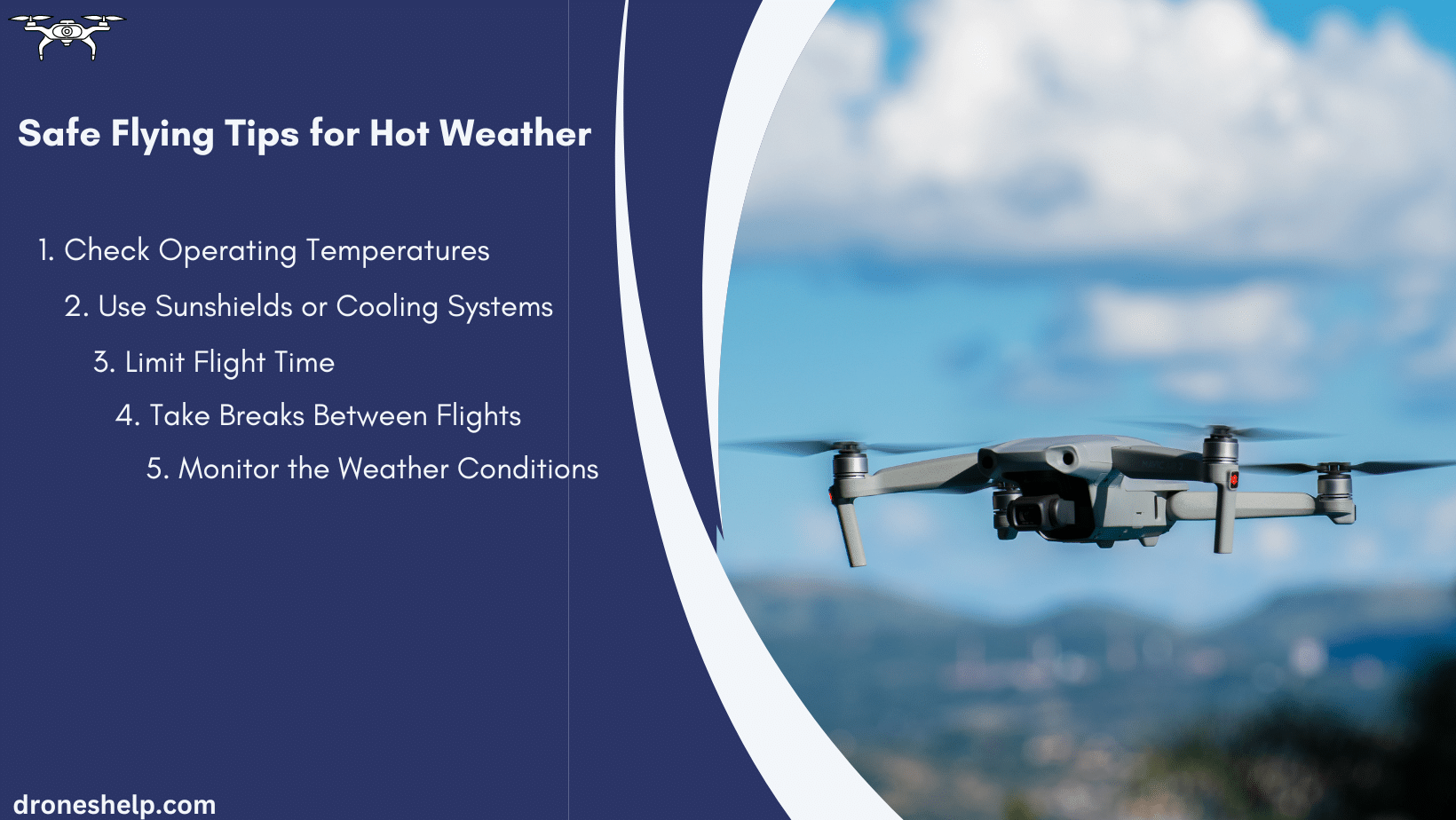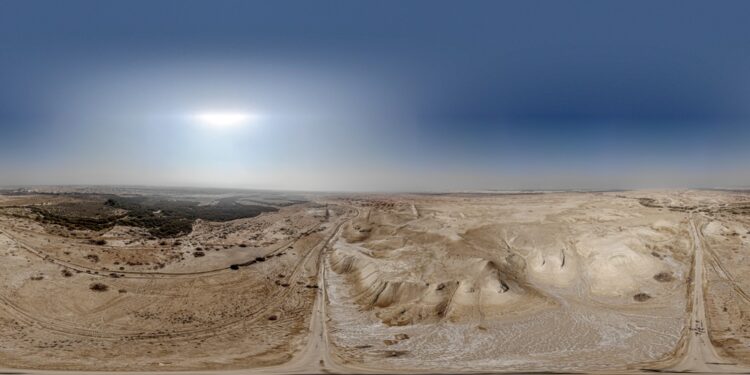Drones have become a popular tool for aerial photography, videography, and recreational flying. However, when it comes to flying a drone, the weather plays a crucial role in its performance. Hot weather, in particular, can affect a drone’s electronic components and overall functionality. The question many drone pilots ask is: Can you fly a drone in hot weather? The answer is yes, but with careful considerations. In this guide, we’ll explore how to fly your drone in hot weather and share essential tips for safely flying in high temperatures to avoid permanent damage.
Understanding How Heat Affects Drone Performance

Before you take off on a hot day, it’s important to understand the impact that high temperatures can have on your drone. Several factors come into play, including air density, battery capacity, and electronic components. Each of these can be affected by extreme weather conditions, so it’s vital to know how to manage them properly.
Air Density
One key factor to consider when flying in hot weather is air density. As the ambient temperature rises, the air density decreases. This means that your drone’s propellers have to work harder to generate the same amount of lift as they would on a cooler day. This can lead to shorter flight time and increased wear on the electronic components.
Electronic Components and Permanent Damage
Drones are equipped with sensitive electronic components such as motors, GPS, and cameras. Excessive heat can cause these components to overheat, leading to potential permanent damage. When you fly your drone in hot weather, it’s important to keep an eye on the temperature of the motors and other key systems to ensure they don’t overheat. Most drones have built-in safeguards that alert you when the operating temperatures are too high, but it’s still a good practice to avoid pushing your drone to its limits.
Battery Capacity and Flight Time
Drones rely heavily on their batteries, and hot weather can significantly impact drone batteries. When exposed to high temperatures, the battery capacity can decrease, reducing the overall flight time. In some cases, the battery may overheat, causing it to shut down mid-flight, which can be dangerous. To extend the best drone fly time in hot conditions, consider the following tips:
Avoid flying during the hottest part of the day. Try to fly in the early morning or late afternoon when the ambient temperature is lower.
Keep your drone batteries cool by storing them in a shaded or insulated bag when not in use.
Monitor the battery levels closely and land your drone when the battery is low, rather than pushing it to the limit.
The average fly time for drones in hot weather is typically shorter than in cooler conditions. You may notice that your drone, which normally has a 25-minute flight time, can only fly for 20 minutes or less when it’s too hot. Knowing your drone’s limits will help prevent overheating and ensure a safe return.
Safe Flying Tips for Hot Weather
Flying in hot weather presents unique challenges, but with the right precautions, you can still enjoy safely flying your drone. Here are some essential tips for flying in hot conditions:

1. Check Operating Temperatures
Before you head out, check the recommended operating temperatures for your drone model. Most drones are designed to operate within a specific temperature range, usually between 0°C (32°F) and 40°C (104°F). If the temperature exceeds this range, it might be too hot to fly safely. High temperatures can increase the risk of permanent damage to your drone’s electronic components, so it’s important to avoid flying in extreme heat.
2. Use Sunshields or Cooling Systems
If you plan to fly your drone in hot weather for extended periods, consider using sunshields or cooling systems to help regulate the temperature of your electronic components. Some drone accessories are specifically designed to reduce heat exposure and keep your drone functioning optimally.
3. Limit Flight Time
As mentioned earlier, drone batteries tend to drain faster in hot weather. To prevent your drone from overheating, limit your drone flight to shorter intervals. For example, if you normally fly for 30 minutes, reduce it to 15-20 minutes in high heat. This will give your drone a chance to cool down between flights, preserving the lifespan of your electronic components and battery.
4. Take Breaks Between Flights
Giving your drone time to cool down between flights is essential in hot weather. After each flight, turn off the drone and allow it to rest in a shaded or cool area. This will prevent the internal components from overheating and help avoid permanent damage.
5. Monitor the Weather Conditions
Before flying, always check the weather conditions for your location. Hot weather often comes with unpredictable wind patterns and air turbulence, which can make flying more difficult. If there are strong winds or sudden temperature spikes, it might be best to postpone your flight. In addition, avoid flying in direct sunlight for long periods, as the sun can heat up the drone and its components quickly.
Conclusion
Flying a drone in hot weather requires extra precautions to avoid permanent damage and ensure a safe, successful flight. By understanding how air density, electronic components, and battery capacity are affected by high temperatures, you can make informed decisions about when and how to fly. Always check the weather conditions, monitor your drone’s flight time, and take breaks to cool down. With the right preparation, you can enjoy the thrill of aerial photography and drone flight, even in the hottest weather.


